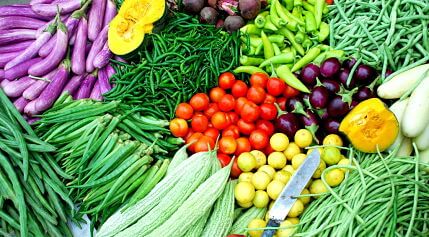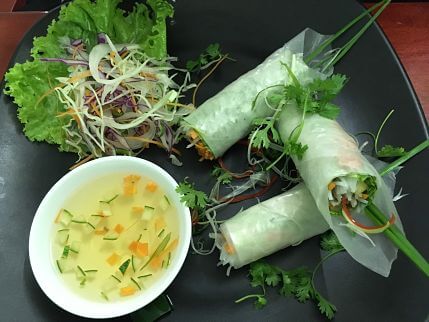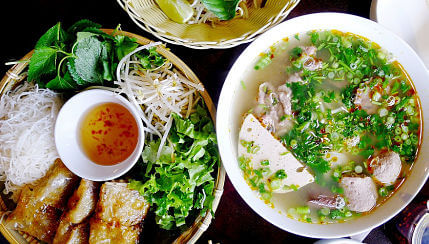Vietnamese Food Identification and Classification
The most important instrument in Vietnamese street cuisine is possibly the Don Ganh. This bamboo pole with two reed baskets is for carrying merchandise or cooking equipment from street corner to street corner. Vietnamese street-food vendors carry a whole cooking and eating establishment, including stools for the customers, in the two baskets. Hunched over they quickly prepare delicious noodle dishes or sweet desserts. Just as swiftly and efficiently, they can also take down their stands if an unexpected police check happens.

As a visitor, you do not always notice the food stands among the bustle in the busy streets. The vendors are found on corners, on pavements, under lampposts at intersections, or in little alleyways. Often some experience is required to ‘spot’ the right dishes.
In addition to these portable stands, you also find an abundance of stationary food stalls in door openings, open windows, garage doors, around markets, or unpretentious little restaurants in real street-food streets.
Without difficulty, the street cooks can serve culinary masterpieces on a minimal surface area. Like no others, the Vietnamese are skilful, efficient, ingenious and creative. Food stands are often very simple. Sometimes they are nothing more than a charcoal fire, a small glass display case and a few low plastic stools.

Boiling and steaming are common cooking methods on the street. Noodles disappear in water. Large cooking pots full of steaming broth, and metal steaming baskets, stand on pavements and in simple eating places. On the street, the wok used more for deep frying than for stir-frying. Grilling on a charcoal fire is also a popular method of cooking. As the street-food vendor cannot carry much equipment, and only has a small space available, they must do a significant amount of preparatory work at home or behind the scenes.
A Taste of Vietnamese Food
Chopsticks are usually used to eat Vietnamese food from a little bowl. You should always lay them crossways on it when you finish.. Never place them perpendicular to the dish, that is a reference to the burning of incense and the dead. Identification and classification disappear in the water and large cooking pots full of steaming broth and metal.
Slurping is not considered impolite, and waste, serviettes, scales and the shells of shellfish often land on the ground or in your trash bucket under the table.

A cook in Vietnam has a few simple but multifunctional utensils at their disposal. Long sticks utilised for cooking or to spread things on bread rolls, a metal basket for immersing noodles in boiling water, a sieve for washing herbs or cover and protect foodstuffs. A pair of scissors is a valued utensil for snipping noodles into ready-to-eat pieces or for cutting dried meat into strips. The rasp is favourite to prepare vegetables and fruit for salads. And, of course, the Vietnamese cook has a set of razor-sharp knives.
Selling Vietnamese Food
In addition to these cooking utensils, the voice is an essential instrument in selling street-food dishes. The vendor attracts customers by softly singing the name of the dish ỏr makes a distinctive sound with a bell or sticks to announce the arrival of the merchandise.
Thanks to the French Jesuit, Alexandre De Rhodes (1591—1660), we can now recognise Vietnamese writing. He developed the Quoc Ngu system that translates the Chinese-based characters chu nom to the Latin alphabet. Many accents and diacritical markings decorate and clarify the Vietnamese tonal language.
It is not easy to learn Vietnamese. But thanks to the current writing system, we can recognise specific signs and street-food dishes from the lettering.
In this website, the recognisability of the Vietnamese names of dishes, and thus the language, to subdivide street food into various groups or categories: noodles, cakes, salads, rice, shellfish, sweets, dips and drinks.